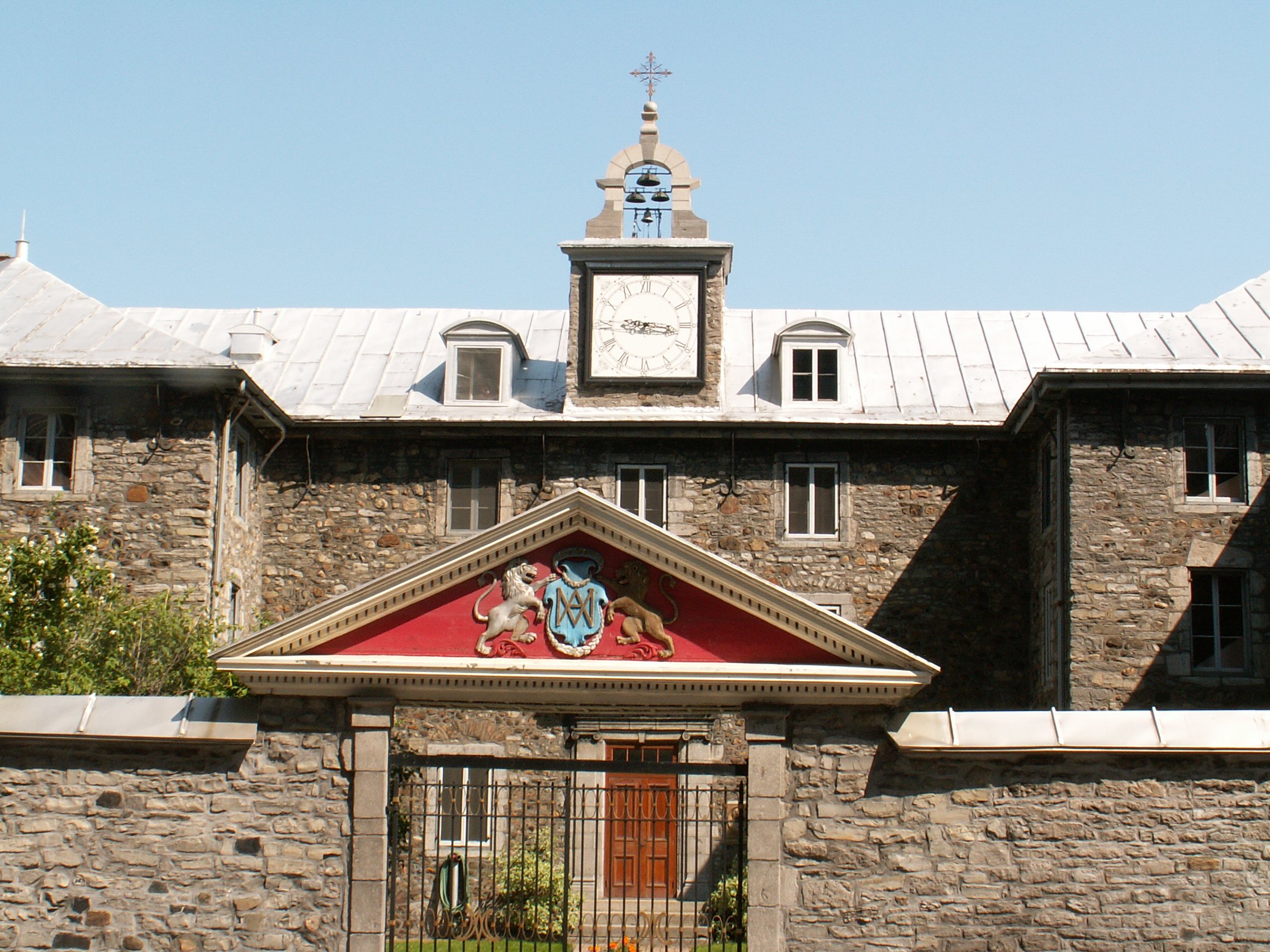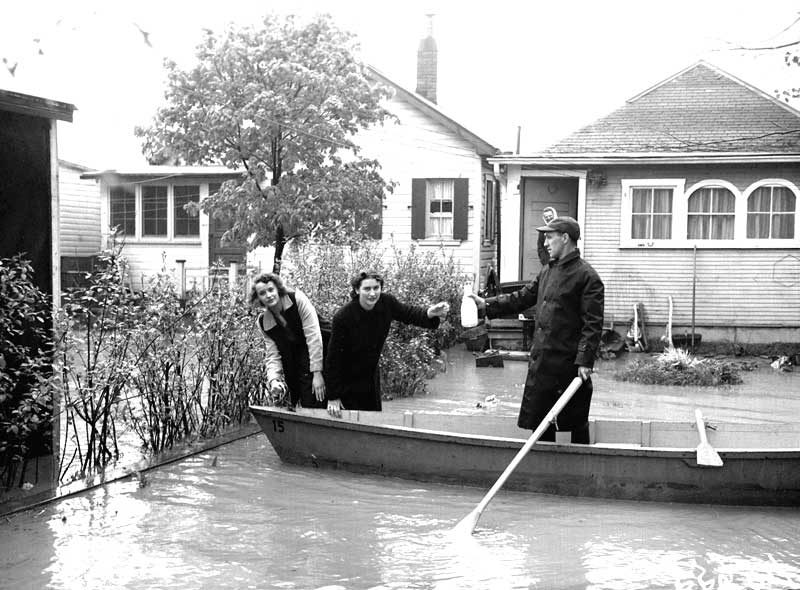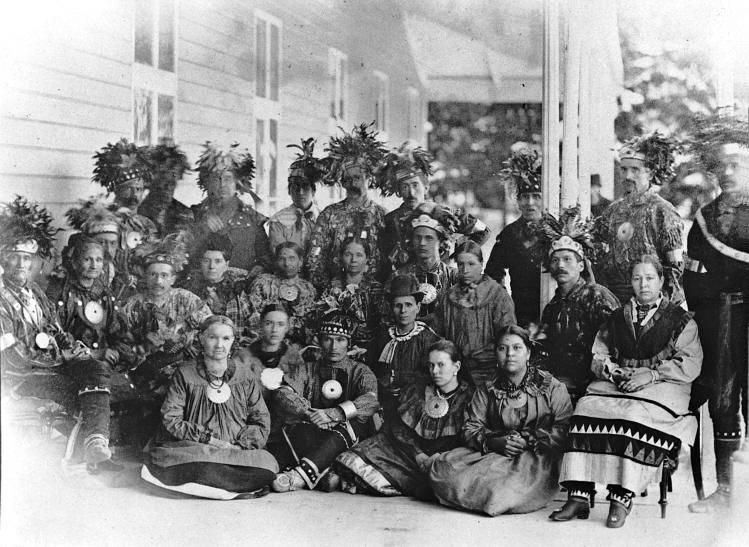|
Carruthers Creek (Canada)
The Carruthers Creek is a stream in the Durham Region of Ontario, Canada. Its watershed lies within the boundaries of Pickering and Ajax. Etymology The stream is named after Richard Carruthers (1819-1887), an English immigrant from Cumberland, whose family owned 202 acres along the banks of the Creek. Carruthers, a farmer, purchased Lots 4 and 5 on Concession Road 1 in January 1856 and September 1862, and the land remained in his family until at least the 1940s. It is remarkable that the stream is named after him, because his family was not the earliest, the wealthiest or the most prominent landowner in the region. History The Carruthers Creek watershed includes 32 archaeological sites, 24 of which are identified with indigenous peoples, 7 with European settlers, and 1 of uncertain origin. Of the indigenous sites, 5 belong to Archaic period, 2 belong to Woodland period, and 17 are of undetermined date. The five Archaic period sites, dated 7000-1000 BCE, are all located in ... [...More Info...] [...Related Items...] OR: [Wikipedia] [Google] [Baidu] |
Canada
Canada is a country in North America. Its ten provinces and three territories extend from the Atlantic Ocean to the Pacific Ocean and northward into the Arctic Ocean, covering over , making it the world's second-largest country by total area. Its southern and western border with the United States, stretching , is the world's longest binational land border. Canada's capital is Ottawa, and its three largest metropolitan areas are Toronto, Montreal, and Vancouver. Indigenous peoples have continuously inhabited what is now Canada for thousands of years. Beginning in the 16th century, British and French expeditions explored and later settled along the Atlantic coast. As a consequence of various armed conflicts, France ceded nearly all of its colonies in North America in 1763. In 1867, with the union of three British North American colonies through Confederation, Canada was formed as a federal dominion of four provinces. This began an accretion of provinces an ... [...More Info...] [...Related Items...] OR: [Wikipedia] [Google] [Baidu] |
Land Patent
A land patent is a form of letters patent assigning official ownership of a particular tract of land that has gone through various legally-prescribed processes like surveying and documentation, followed by the letter's signing, sealing, and publishing in public records, made by a sovereign entity. It is the highest evidence of right, title, and interest to a defined area. It is usually granted by a central, federal, or state government to an individual, partnership, trust, or private company. The land patent is not to be confused with a land grant. Patented lands may be lands that had been granted by a sovereign authority in return for services rendered or accompanying a title or otherwise bestowed ''gratis'', or they may be lands privately purchased by a government, individual, or legal entity from their prior owners. "Patent" is both a process and a term. As a process, it is somewhat parallel to gaining a patent for intellectual property, including the steps of uniquely def ... [...More Info...] [...Related Items...] OR: [Wikipedia] [Google] [Baidu] |
Louis Jolliet
Louis Jolliet (September 21, 1645after May 1700) was a French-Canadian explorer known for his discoveries in North America. In 1673, Jolliet and Jacques Marquette, a Jesuit Catholic priest and missionary, were the first non-Natives to explore and map the Upper Mississippi River. Early life Jolliet was born in 1645 in Beaupré, a French settlement near Quebec City, to Jean Jolliet and Marie D'Abancourt. When he was six years old, his father died; his mother then married a successful merchant, Geoffroy Guillot dit Lavalle, until his death in 1665. Shortly after the passing of his mother's second husband, she was married to Martin Prevost until her death in 1678. Jolliet's stepfather owned land on the Ile d'Orleans, an island in the Saint Lawrence River in Quebec that was home to First Nations. Jolliet spent much time on Ile d'Orleans, so it was likely that he began speaking Indigenous languages of the Americas at a young age. Besides French, he also learned English and Spanish. ... [...More Info...] [...Related Items...] OR: [Wikipedia] [Google] [Baidu] |
Sulpician
The Society of Priests of Saint-Sulpice (french: Compagnie des Prêtres de Saint-Sulpice), abbreviated PSS also known as the Sulpicians is a society of apostolic life of Pontifical Right for men, named after the Church of Saint-Sulpice, Paris, where it was founded. The members of the Society add the nominal letters PSS after their names to indicate membership in the Congregation. Typically, priests become members of the Society of the Priests of St. Sulpice only after ordination and some years of pastoral work. The purpose of the society is mainly the education of priests and to some extent parish work. As their main role is the education of those preparing to become priests, Sulpicians place great emphasis on the academic and spiritual formation of their own members, who commit themselves to undergoing lifelong development in these areas. The Society is divided into three provinces, operating in various countries: the Province of France, Canada, and the United States. In Franc ... [...More Info...] [...Related Items...] OR: [Wikipedia] [Google] [Baidu] |
Humber River (Ontario)
The Humber River ( oj, Gabekanaang-ziibi, p=Gabekanaang-ziibi, ''meaning: "little thundering waters"'') is a river in Southern Ontario, Canada. It is in the Great Lakes Basin, is a tributary of Lake Ontario and is one of two major rivers on either side of the city of Toronto, the other being the Don River to the east. It was designated a Canadian Heritage River on September 24, 1999. The Humber collects from about 750 creeks and tributaries in a fan-shaped area north of Toronto that encompasses portions of Dufferin County, the Regional Municipality of Peel, Simcoe County, and the Regional Municipality of York. The main branch runs for about from the Niagara Escarpment in the northwest, while another major branch, known as the East Humber River, starts at Lake St. George in the Oak Ridges Moraine near Aurora to the northeast. They join north of Toronto and then flow in a generally southeasterly direction into Lake Ontario at what was once the far western portions of the city. Show ... [...More Info...] [...Related Items...] OR: [Wikipedia] [Google] [Baidu] |
Teiaiagon
Teiaiagon was an Iroquoian village on the east bank of the Humber River in what is now the York district of Toronto, Ontario, Canada. It was located along the Toronto Carrying-Place Trail. The site is near the current intersection of Jane Street and Annette Street, at which is situated the community of Baby Point. The name means "It crosses the stream." History Percy Robinson's ''Toronto During the French Regime'' shows Teiaiagon as being a jointly occupied village of Seneca and Mohawk. Helen Tanner's ''Atlas of Great Lakes Indian History'' describes Teiaiagon as a Seneca village around the years 1685-1687, although it existed before that time, and as a Mississauga village around 1696. Étienne Brûlé passed through Teiaiagon in 1615. The village was on an important route for the developing fur trade industry, and it was also "surrounded by horticultural fields". Williamson 2008: 51 It was said to be about "a day's journey from the Toronto Lake, our present Lake Simcoe". On ... [...More Info...] [...Related Items...] OR: [Wikipedia] [Google] [Baidu] |
Rouge River (Ontario)
The Rouge River is a river in Markham, Pickering, Richmond Hill and Toronto in the Greater Toronto Area of Ontario, Canada. The river flows from the Oak Ridges Moraine to Lake Ontario at the eastern border of Toronto, and is the location of Rouge Park, the only national park in Canada within a municipality. At its southern end, the Rouge River is the boundary between Toronto and southwestern Pickering in the Regional Municipality of Durham. History The Rouge River is part of the Carolinian life zone that is found in Southern Ontario. After the eradication of both the Petun and the Wyandot (Huron), Senecas from New York attempted to establish/expand their fur trade activities by establishing a village named ''Gandechiagaiagon'' (recorded variously as "Gandatsekiagon", "Ganatsekwyagon", "Gandatchekiagon", or "Katabokokonk"), meaning "sand-cut" at the mouth of Rouge River. According to a 1796 list by English surveyor Augustus Jones, the Mississauga name for the river was ''Gi ... [...More Info...] [...Related Items...] OR: [Wikipedia] [Google] [Baidu] |
Ganatsekwyagon
Bead Hill is an archaeological site comprising the only known remaining and intact 17th-century Seneca site in Canada. It is located on the banks of the Rouge River in Rouge Park, a city park in Toronto, Ontario. Because of its sensitive archaeological nature, it is not open to the public, nor readily identified in the park. It was designated a National Historic Site of Canada in 1991. Bead Hill site The Bead Hill site is believed to be one of seven villages established along the north shore of Lake Ontario by the Iroquois in the 1660s. The Bead Hill site was settled temporarily as part of a mid 17th century push by the Iroquois Confederacy north, from their traditional homeland in New York state. The Huron Wendat Confederacy, had once occupied the north shores of Lake Ontario but had moved north toward Georgian Bay and Lake Simcoe at the end of the 16th century. Following extensive excavation undertaken in the 1980s it was determined that the Bead Hill site could be the his ... [...More Info...] [...Related Items...] OR: [Wikipedia] [Google] [Baidu] |
Seneca People
The Seneca () ( see, Onödowáʼga:, "Great Hill People") are a group of indigenous peoples of the Americas, Indigenous Iroquoian-speaking people who historically lived south of Lake Ontario, one of the five Great Lakes in North America. Their nation was the farthest to the west within the Six Nations or Iroquois, Iroquois League (Haudenosaunee) in New York before the American Revolution. In the 21st century, more than 10,000 Seneca live in the United States, which has three federally recognized Seneca tribes. Two of them are centered in New York: the Seneca Nation of Indians, with two Indian reservation, reservations in western New York near Buffalo, New York, Buffalo; and the Tonawanda Band of Seneca, Tonawanda Seneca Nation. The Seneca-Cayuga Nation is in Oklahoma, where their ancestors were relocated from Ohio during the Indian Removal. Approximately 1,000 Seneca live in Canada, near Brantford, Ontario, at the Six Nations of the Grand River First Nation. They are descendants ... [...More Info...] [...Related Items...] OR: [Wikipedia] [Google] [Baidu] |
Southern Ontario
Southern Ontario is a primary region of the province of Ontario, Canada, the other primary region being Northern Ontario. It is the most densely populated and southernmost region in Canada. The exact northern boundary of Southern Ontario is disputed; however, the core region is situated south of Algonquin Park, the latter being in an area of transition between coniferous forest north of the French and Mattawa Rivers and southern deciduous forest. It covers between 14 and 15% of the province, depending on the inclusion of the Parry Sound and Muskoka districts which also lie in the transitional area between northern and southern forest regions. With approximately 13.5 million people, the region is home to approximately 36% of Canada's population of 37.0 million. Southern Ontario differs greatly from Northern Ontario, in that it has a much higher population density, a different climate, and a different culture than its northern counterpart. It is broken into smaller subregions, i ... [...More Info...] [...Related Items...] OR: [Wikipedia] [Google] [Baidu] |
Huron-Wendat Nation
The Huron-Wendat Nation (or Huron-Wendat First Nation) is an Iroquoian-speaking nation that was established in the 17th century. In the French language, used by most members of the First Nation, they are known as the Nation Huronne-Wendat. The French gave the nickname “Huron” to the Wendat, meaning “boar’s head” because of the hairstyle of Huron men. Wendat (Quendat) was their confederacy name, meaning “people of the island” or "dwellers on a peninsula." The nation inhabited the area between Lake Simcoe and Georgian Bay, historically known as Wendake (Huronia), conquered and devastated in the 17th century Beaver Wars, which prompted the surviving Hurons to move east to Quebec, under French protection. It now has two communities and reserves ( Wendake 7 and Wendake 7A) at Wendake, Quebec, a municipality now enclosed within Quebec City in Canada. The 1760 Huron-British North American Peace Treaty, lost in 1824 but rediscovered in the 1990s, showed that a large chunk of ... [...More Info...] [...Related Items...] OR: [Wikipedia] [Google] [Baidu] |










